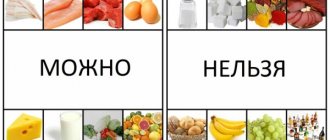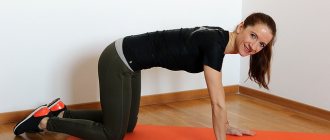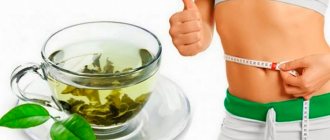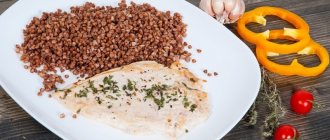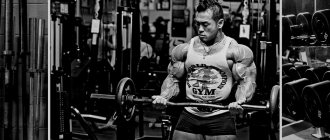1513
Diets have become popular lately, but one of them, the Kwasniewski diet, needs to be given utmost attention. It is this diet that is gaining first place among other methods of losing weight.
Let's try to figure out what kind of diet this is and what it is eaten with.
It is logical to assume that if as little fat as possible enters the body with food, then the process of losing weight goes much faster.
Fat is a high-calorie product, containing 9 kcal per molecule. Carbohydrates contain fewer calories, only four. The essence of the Kwasniewski diet is designed to consume as little carbohydrates as possible, but without limiting yourself to natural proteins. Additionally, you should consume unsaturated vegetable fats.
The diet triggers an independent mechanism in the body that destroys subcutaneous fat. Thanks to this, intramuscular fat and glycogen are significantly saved.
Polish nutritionist and general practitioner Jan Kwasniewski suggests eating only fatty foods to achieve an ideal figure.
Advantages of Dr. Kwasniewski's fat diet
With Dr. Kwasniewski's fat diet, weight decreases slowly - over 6 months the weight loss is about 15 kg (2.5 kg per month), thanks to this it is possible to avoid stretch marks and sagging skin. A slow pace of weight loss is considered more favorable, as it reduces the risk of regaining the lost pounds after completing the diet.
A significant advantage of a fat diet is the absence of hunger: the dishes on the menu are very filling.
The author of the diet claims that it is beneficial for people with diabetes and cardiovascular diseases.
Optimal nutrition by Jan Kwasniewski
The Polish nutritionist is convinced that instead of low-fat foods and fruits for weight loss, the body needs foods that contain a lot of fat and protein. These include meat, lard, cream, fatty cheese and eggs.
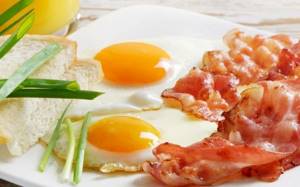
You need to limit the consumption of vegetables, fruits, baked goods and cereals in your diet. Jan Kwasniewski believes that a large amount of fiber is harmful to the body and is poorly absorbed, and vegetables and fruits contain too much moisture - they can be replaced with water without any problems.

It works like this: thanks to the high protein content in the body, the process of utilization of subcutaneous fat begins, and muscle energy reserves are saved. As a result, an overweight person begins to lose excess weight, and a too thin person begins to gain the missing kilograms.

In addition, thanks to such nutrition, the physical and mental state stabilizes and improves, and vigor appears. Jan Kwasniewski is convinced that such nutrition helps reduce portions and the number of meals, because proteins and fats take much longer to digest, and the feeling of fullness lasts for hours.
Disadvantages and contraindications of Dr. Kwasniewski's fat diet
The diet is not balanced; according to most experts, it is dangerous to health, especially considering the duration recommended by Kwasniewski.
Fiber deficiency leads to constipation, and lack of vitamins and minerals affects appearance and overall health.
A lack of carbohydrates in the diet leads to ketosis - a sharp increase in the number of ketone bodies in the blood. Ketosis does promote the breakdown of fats in the body, but at the same time lethargy, drowsiness, decreased concentration and general health worsen.
A fatty diet is dangerous for people with atherosclerosis, diseases of the digestive system and any chronic diseases.
Execution cannot be pardoned
Can you tell me where to put a comma here?
It must be said that Newton’s apple did not fall on Dr. Kwasniewski’s head; he did not come to his Optimal Nutrition suddenly, but after conducting all kinds of tests over many years.
First on animals, and then on members of their own family, by the way. Probably, as I understand it, this fat diet is one of the most medically tested diets (at least in Poland, the homeland of the nutritionist). And there is something to check, you will agree.
Because the harm from such a diet seems obvious.
Hurray, we are losing weight, and getting younger too!
From a biochemical point of view, the weight loss process is underway: the diet blocks the production of triglycerides in the liver when consuming more than 10% of fat in the diet.
If there is a significant reduction in carbohydrates during meals in any foods (potatoes, bread), then the body is forced to burn fat reserves in the tissues. The results, by the way, can be very pleasant - up to 7 kg per month, not bad, right?

In addition, participants in the weight loss experiment noted numerous positive side effects, in particular:
Lightness, a surge of energy, vigor, improvement in overall health.
There is evidence of the positive effect of the method in the treatment of even such serious diseases as depression, Parkinson’s and Alzheimer’s diseases, and epilepsy in children.
However, the exact mechanisms by which the diet functions and its long-term effects remain unclear.
Caution: you are at risk!
From a medical point of view, this method looks terrible:
- It is absolutely unbalanced, and a deficiency, or even complete absence, of certain substances in the body, in particular plant proteins, is fraught with health problems. And a lack of carbohydrates may well result in your body not having enough energy to digest all the amount of fat that you are trying to stuff into it.
- It can cause a significant increase in the risk of atherosclerosis and an increase in cholesterol levels, as well as a general decrease in performance, fatigue, and drowsiness.
However, some of the Polish medical institutes conducted research on the Kwasniewski method and did not see any harm in it. But researchers from the Polish Academy of Sciences and a number of other scientists considered the diet harmful.

The doctor himself considers the attitude of the majority of the professional medical community towards him to be biased, and the conclusions of scientists are hasty and based on false premises, not confirmed by any statistical data. What do you think, friends?
Dr. Kwasniewski's fat diet menu
Sample menu of Dr. Kwasniewski’s fat diet for 1 day:
| Breakfast | Scrambled eggs of 3 eggs with sausages, sausage or bacon, unsweetened tea. You can add a piece of bread. |
| Dinner | Cabbage soup in a strong meat broth, salad with tongue or beef. |
| Dinner | Cheese pancakes with a glass of natural cream or fried potatoes with a cutlet. |
Doctors' opinions
A fatty diet, according to doctors, is effective.
It can really help in eliminating extra pounds and normalizing metabolism. However, those losing weight should be very careful: they need to consume only natural fats, and not overeat. In addition, fried foods will cause harm to the human body. It is better to prepare food by boiling and baking. Only by consuming natural fats and properly processing foods can you lose weight. At the same time, you should not overeat, this will harm the digestive organs. It is important to observe moderation when eating food. If you follow these rules, you can really lose extra pounds and achieve slimness.
Video commentary
In the video, endocrinologist Katya Young participates in a discussion of the fat diet.
And then they are surprised that at the age of 35-40 they develop stomach and duodenal ulcers, a wide variety of neuroses and other ailments, they are always tired, irritated and not getting enough sleep, because even when they already have time to sleep, they can't sleep. Then they die from diseases of the cardiovascular system and other avalanche-like diseases of civilization. And if such people even think about the reasons for their poor condition, they see them everywhere and associate them with everything, just not with what, where and how they eat.
Therefore, before deciding to switch to an optimal diet, you need to realize that food is the most important basic life function on which our entire life depends in all its manifestations and aspects.
Therefore, in our mentality it should take a leading place in relation to all other life functions. We must understand that nutrition plays an extremely important role in our lives and it is worth paying more attention to it and making due efforts for this.
I'm not saying that food should be treated as some kind of sacred act. But we must be aware that by taking food, we supply our body with building material and energy. How we function, think and feel in the hours leading up to our next meal depends on the nutrition and building material we take.
An appropriate time must be provided for eating. You should sit at the table in a state of calm, relaxedness, and relaxation; Chew food slowly and thoroughly, focusing on its taste and nutritional value. You should not read while eating, because it is not only impolite towards others, but also harmful to health. Reading distracts the brain from the functions of controlling processes that stimulate appetite and internal secretory activity, which contributes to the proper digestion of food. While eating, you should not conduct lively, stressful arguments or formal negotiations, which usually require close attention and a lot of nervous tension. Therefore, numerous official lunches and dinners, which are aimed at resolving official issues, are harmful to health.
It is advisable not to start eating in a state of extreme fatigue and psychological stress, but first try to rest and calm down. Even in a restaurant, while waiting for your ordered dish to be served, you can “disconnect” from everyday affairs, think about something soothing, or recreate some calm melody in your thoughts. At home, it’s worth resting for at least 15 minutes before lunch so that our nervous system gets a short break. And after lunch you shouldn’t burden your body too much. Some women, having had a hearty lunch according to the “lots of sweet and fatty” principle, immediately take up work that requires a lot of effort to “shed calories.” Nothing could be more wrong! Such actions subject one’s own body to torture, and “losing calories” will lead to absolutely nothing when eating according to the principle “a lot, sweet and fatty.”
You should calculate your strength in such a way that you do the hardest work no earlier than 2-3 hours after eating. If this is not always possible, then we must remember this rule and strive to apply it more often in life.
2. What is the optimal diet?
The optimal diet is not a “diet” in the usual sense of the word. When a doctor prescribes us a “diet,” he temporarily prohibits us from eating certain foods or those prepared in a certain way (baked, fried, etc.) until some painful symptoms disappear. And as soon as the disease begins to torment us less, we stop following the diet.
An optimal diet is a nutritional method for every person - both sick and healthy. This is a “diet” forever. Because a person should always eat in such a way as to satisfy the body’s needs for building material and energy as fully as possible. This is what an optimal “diet” provides. Whenever the optimal “diet” is spoken of, it should be understood as the optimal nutrition of a person, the best possible option.
The optimal diet is rich in fat. When switching to optimal nutrition, you need to eat a lot of fat. They are the basis and main component of food. One third of the total fat in the diet should be protein. You can eat half as much carbohydrates as protein. Therefore, the ratio between protein (B), fat (F) and carbohydrates (C) should theoretically be 1: 2.5-3.5: 0.5. When consuming biologically valuable proteins contained, for example, in egg yolks, liver and kidneys, the demand for protein is significantly reduced and then it is recommended to eat about 1 g of carbohydrates per 1 g of protein. It is advisable to eat about 0.8 g of carbohydrates per 1 kg of body weight per day and eat fatty foods. Thus, food products and dishes prepared from them should be selected in such a way that these three main components contained in them meet the above proportions.
Recipes
Roast pork
Place a piece of meat (150 grams) on a preheated frying pan greased with sunflower oil. Fry for about 20 minutes.
At this time, beat one egg with crumbled breadcrumbs. After a crispy crust appears, generously brush a piece of meat with the prepared mixture. Cook the steak for another 5 minutes on each side.
Syrniki
In a bowl, mix 3 grams of wheat flour, 2 raw eggs, 500 grams of cottage cheese and 50 grams of melted butter. Add salt to taste.
Mix and form into neat balls. Fry in a preheated frying pan with the addition of vegetable oil. The balls must be rolled in flour before frying.
